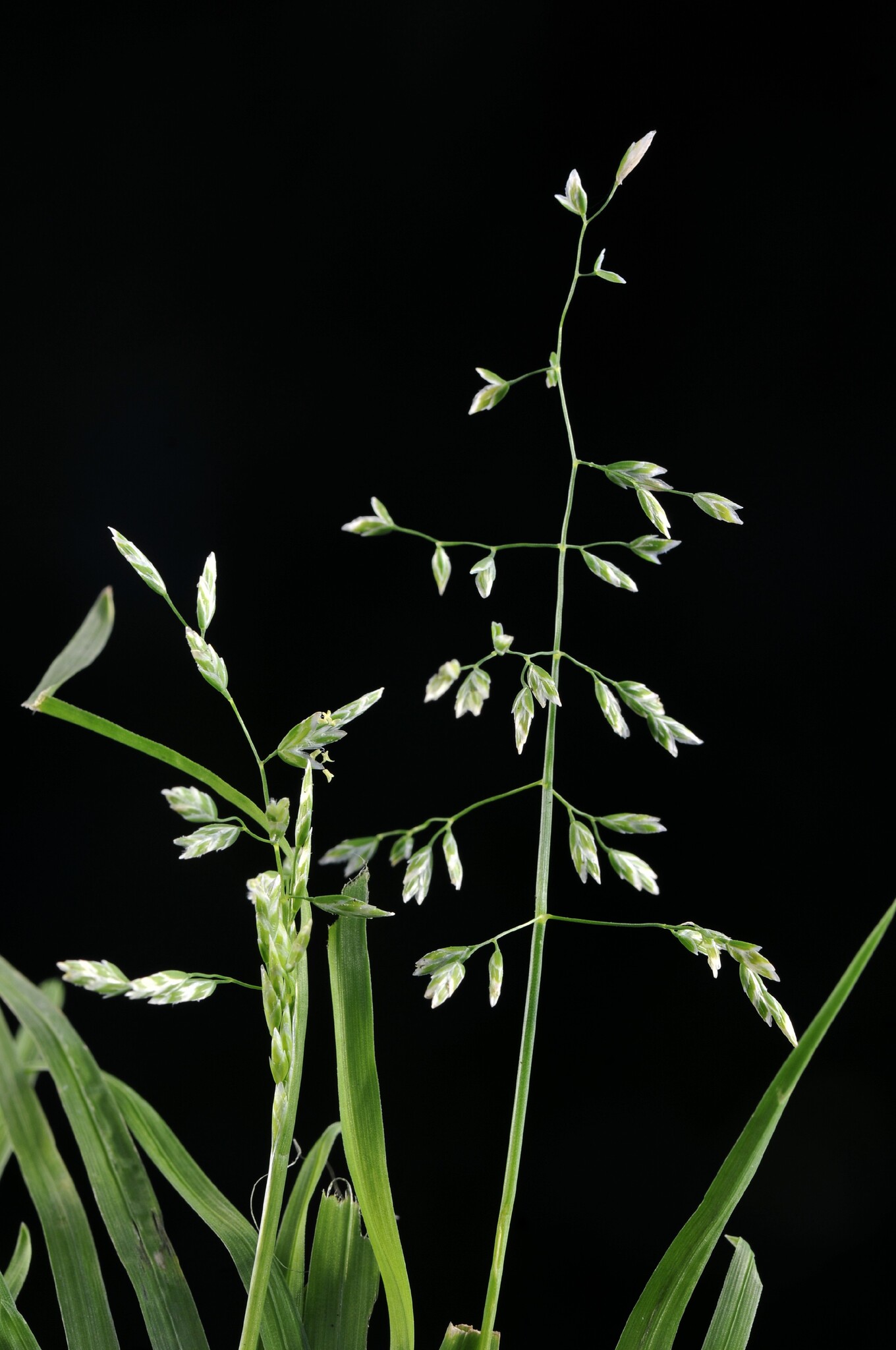
Greek poa – grass.
Annuals or perennials. Leaves flat, folded to inrolled and often ending in a boat/canoe-like tip. Inflorescence open or relatively condensed. Spikelets laterally flattened, of 2-several florets, the glumes persisting after the florets fall. Glumes keeled, lowermost usually 1-nerved, upper usually 3- nerved. Lemma awnless, keeled, 5-nerved. Palea 2-keeled.
Common wayside weeds. In gardens they may be deliberate or weedy components of lawns. Some species often cultivated for revegetation projects. Many different poas may be encountered and with many native species a key, even to common species, would probably confuse.
Seed or division.
A forage and fodder grass also often included in lawn grass mixes.
Rather similar to Festuca but with a keeled lemma. Many species have a 'web' (a basal tuft of fine hairs) on the lemmas, which are unawned.
200 or more species from mostly temperate and cold regions, a few from montane tropics. Australia has 34 native species and about 6 naturalised species.
Vickery (1970).
Source: (2005). Poaceae. In: . Horticultural Flora of South-eastern Australia. Volume 5. Flowering plants. Monocotyledons. The identification of garden and cultivated plants. University of New South Wales Press.
